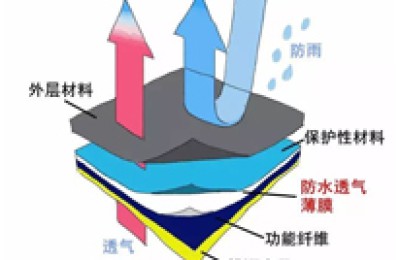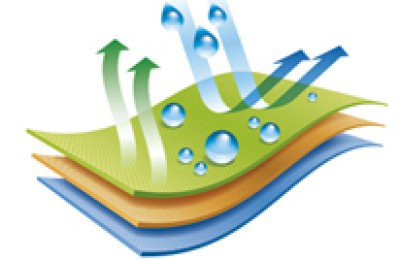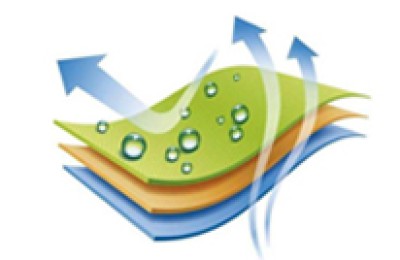Common quality problems in soft finishing
Common quality problems in soft finishing
①Cannot achieve the desired feel:
The soft style of soft finishing varies with customer requirements, such as soft, smooth, fluffy, waxy, oily, dry and slippery, etc. Different softeners are selected according to different styles. For example, in soft sheets, there are softener sheets with different structures, which have different softness, fluffiness, smoothness, yellowing, and influence on the water absorption of fabrics. In silicone oil, the properties of modified silicone oil with different modified genes are also different. For example, amino silicone oil, hydroxyl silicone oil, epoxy modified silicone oil, carboxyl modified silicone oil, etc. have different properties.
②Color turns yellow:
Yellowing is generally caused by amino groups in films with a certain structure and amino silicone oil. Among soft sheets, cationic soft sheets have good softness and good hand feel, and are easy to be adsorbed on fabrics. However, they are prone to yellowing and discoloration, which affects the hydrophilicity. If the cationic soft sheets are modified into soft olein, the yellowing will be greatly reduced and the hydrophilicity will be reduced. Improvement, such as compounding cationic film with hydrophilic silicone oil, or compounding with hydrophilic finishing agent, its hydrophilicity will be improved.
Anionic or nonionic films are not prone to yellowing, and some films do not turn yellow and do not affect hydrophilicity.
Amino silicone oil is currently the most widely used silicone oil, but amino groups can cause discoloration and yellowing. The higher the ammonia value, the greater the yellowing. You should use low-yellowing amino silicone oil or polyether-modified, epoxy-modified, etc. that are less likely to yellow. of silicone oil.
In addition, cationic surfactants such as 1227, 1831, and 1631 are sometimes used as emulsifiers during emulsion polymerization. These emulsifiers can also cause yellowing.
Different emulsifiers are used when emulsifying silicone oil, and their “color stripping effects” are different, which will cause color stripping and light color under different circumstances, which is considered a discoloration.
③The hydrophilicity of the fabric decreases:
Generally, the structural problems of the film used, the lack of water-absorbing genes after the silicone oil film is formed, and the blocking of water-absorbing centers such as hydroxyl groups of cellulose fibers, carboxyl groups, and amino groups on wool cause a decrease in water absorption. Anionic and non-ionic films should be used as much as possible. and hydrophilic type silicone oil.
④Dark spots:
The main reason is that the oil stains on the fabric are not removed during pre-treatment, and the oil stains are darker in color during dyeing; or there is too much foam in the dyeing bath, and the mixture of foam, floral sweaters, dyes, etc. stains the fabric; or the oil from the defoaming agent causes dark colors. Oil spots; or tar-like objects in the dye vat staining the fabric; or the dye agglomerates under different circumstances to form dark stains; or excessive calcium and magnesium ions in the water combine with the dye and stain the fabric. It is necessary to carry out targeted treatment, such as adding degreasing agents for refining during pre-treatment, using low-foaming and non-foaming additives as dyeing auxiliaries, selecting defoaming agents that are not prone to oil drift, adding chelating agents to improve water quality, and adding solubilizing and dispersing agents. To prevent dye agglomeration, use tank cleaning agent to clean the tank promptly.
⑤Light spots:
The main reason is that the pre-treatment is uneven, and the wool effect in some parts is not good, resulting in a certain degree of dye repellency, or containing dye-repellent substances, or the cloth contains calcium soap, magnesium soap, etc. or the mercerization is uneven during pre-treatment. Either the semi-finished product is unevenly dried, or the cloth surface is stained with solids such as undissolved Yuanming powder or soda ash, or water drips on the dyed material before drying, or there are stains from additives during post-processing such as softening of the dyed material. Similarly, targeted treatment is necessary, such as strengthening pre-treatment. When selecting pre-treatment additives, it must be difficult to form calcium magnesium soap, and pre-treatment must be uniform and thorough (this is related to the selection of scouring agents, penetrants, chelating dispersants, mercerizing penetrants, etc. ), Yuanming powder, soda ash, etc. must be melted into the tank and production management must be strengthened.
⑥Alkali spots:
The main reason is that alkali removal after pre-treatment (such as bleaching and mercerization) is not clean or uniform, resulting in alkali spots, so the alkali removal process in the pre-treatment process must be strengthened.
⑦Softener stains:
The reasons may be as follows:
a. The soft flaking material is not good, and there are lumps of softener adhering to the fabric;
b. There is too much foam after the material is softened into sheets. When the cloth comes out of the vat, the cloth is stained with softener foam;
c. The water quality is poor, the hardness is too high, and the impurities in the water combine with the softener and aggregate on the fabric. Some factories even use sodium hexametaphosphate or alum to treat water. These substances form flocs with impurities in the water, which cause stains on the cloth after entering the softening treatment bath;
d. The cloth surface contains anionic substances, which combine with the cationic softener to form stains during the softening process, or the cloth surface contains alkali, which causes the softener to agglomerate;
e. Softeners have different structures, and some cause the softener to change from an emulsified state to a slag-like substance that adheres to the fabric at higher temperatures.
f. The tar-like softener and other substances originally in the tank fell off and stuck to the fabric.
⑧Silicon oil stains:
This is a difficult type of stain to treat for the following main reasons:
a. The PH value of the cloth surface is not neutral, especially if it contains alkali, causing the silicone oil to break and float;
b. The water quality of the treatment bath is too poor and the hardness is too high. Silicone oil can easily float in water with a hardness of >150PPM;
c. Silicone oil quality problems include poor emulsification (poor emulsifier selection, poor emulsification process, too large emulsified particles, etc.), intolerance to shearing (mainly problems with the silicone oil itself, such as silicone oil quality, emulsification system, silicone oil varieties, silicone oil synthesis process, etc.) ).
You can choose silicone oil that is resistant to shear, electrolytes, and pH changes, but you should pay attention to the use method and environment of the silicone oil. You can also consider choosing hydrophilic silicone oil.
⑨Poor fluffing:
Poor raising is related to the operation of the raising machine (such as tension control, raising roller speed, etc.).�� are closely related. For fluffing, when applying softener (commonly known as waxing), it is key to control the dynamic and static friction coefficients of the fabric. Therefore, the preparation of fluff softener is the key. If the softener is not used well, it will directly cause Poor fluffing may even cause tearing or door width changes. c1Hr3td8
Disclaimer:
Disclaimer: Some of the texts, pictures, audios, and videos of some articles published on this site are from the Internet and do not represent the views of this site. The copyrights belong to the original authors. If you find that the information reproduced on this website infringes upon your rights, please contact us and we will change or delete it as soon as possible.
AA





